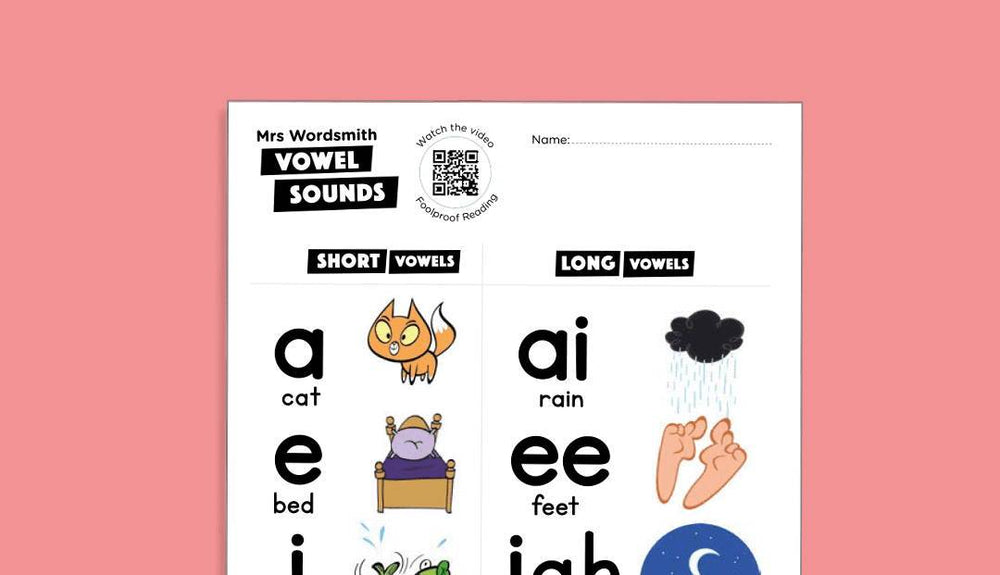You have been redirected to Australlia
Would you like to shop the AU store?
Cart

You're Cart is empty!
You might also like:



















Foolproof Phonics Part 1 is the step-by-step programme for Reception to learn phonics the right way. Available for instant download after purchase, this printable activity pack features 117 pages of curriculum-aligned content and covers 50 phoneme-grapheme correspondences including digraphs and trigraphs. It also includes unique audio support to help guide correct pronunciation.


Reading Comprehension Vocabulary is the print-at-home programme covering everything kids need to excel in reading comprehension. Available for instant download after you purchase it, this printable contains 357 pages developed with assessment experts and aligned with national curriculum. It includes 50 printable activity packs (15-20 minutes to complete each) with 500 frequently occurring vocabulary words in reading comprehension exams and classical literature. Perfect for ages 10-15 (Year 5-10). Note: 3 months of Word Tag Video Game is a non-cumulative promotion limited to one per customer.


Gargantuan is the workbook to reinforce all the big maths and English concepts of the Year 1 curriculum. Available for instant download after purchase, this print-at-home workbook features 108 pages designed for school and home use, aligned ot the Year 1 curriculum for maths and English. Cover basic counting, age-appropriate vocabulary, handwriting, and much more!


Spelling Mixed Practice Year 1 is a print-at-home pack of test papers that provide practice and assessment for Year 1 spelling. Available for instant download after purchase, there are 57 printable pages covering 200 words that appear on exams, as well as homophones, tricky spelling patterns, and tricky words. This printable includes 10 tests and 60 spelling patterns.


Spelling Targeted Practice Year 1 covers an entire year of spelling curriculum in print-at-home, bite-sized packets. Available to download after purchase, this activity pack features 132 pages covering 60 spelling patterns and 200 words that appear on exams. It also covers homophones, tricky spelling patterns, and tricky words. Perfect for ages 5-6.


Spelling Mixed Practice Year 2 is a print-at-home pack of test papers that provide practice and assessment for Year 2 spelling. Available for instant download after purchase, there are 57 printable pages covering 200 words that appear on exams, as well as homophones, tricky spelling patterns, and tricky words. This printable includes 10 tests and 60 spelling patterns. Note: 3 months of Word Tag Video Game is a non-cumulative promotion limited to one per customer.


Spelling Targeted Practice Year 2 covers an entire year of spelling curriculum in print-at-home, bite-sized packets. Available to download after purchase, this activity pack features 132 pages covering 42 spelling patterns and 200 words that appear on exams. It also covers homophones, tricky spelling patterns, and tricky words. Perfect for ages 6-7. Note: 3 months of Word Tag Video Game is a non-cumulative promotion limited to one per customer.


Unlock your potential with this 192-page English workbook. Become the first six-year-old to write a novel, publish an academic article, or host a Ted Talk on "The Importance of Conjunctions". This Year 1 workbook covers phonics, vocabulary, grammar, high-frequency words, handwriting, and more! This is not your average English workbook. Become the next child prodigy.Ages 5-6We make phonics fun! Readiculous teaches kids to read with the science of reading in just 10 minutes a day.The game, endorsed by literacy experts and grounded in scientific research, is designed to engage kids to learn to read through exciting mini-games. Readiculous engages kids to learn the sounds that go with each letter/spelling in a logical progression. As with most new things, repetition is the key to success. This is where we come in, we make learning ridiculously fun (pun intended) by designing reading games for maximum entertainment and educational value. Players learn 2x faster than traditional methods with just 10 minutes of daily play, reflected in personal progress reports showcasing which sounds, letters, and words they’re working on. Readiculous combines fun gameplay with educational content, tailored to support various needs.Note: 3 months of Readiculous Video Game is a non-cumulative promotion limited to one per customer.

Chat with Mrs Wordsmith
Hello, and welcome to Mrs Wordsmith support.
How can I help you today?
I can help you with:

Comment
Leave a comment